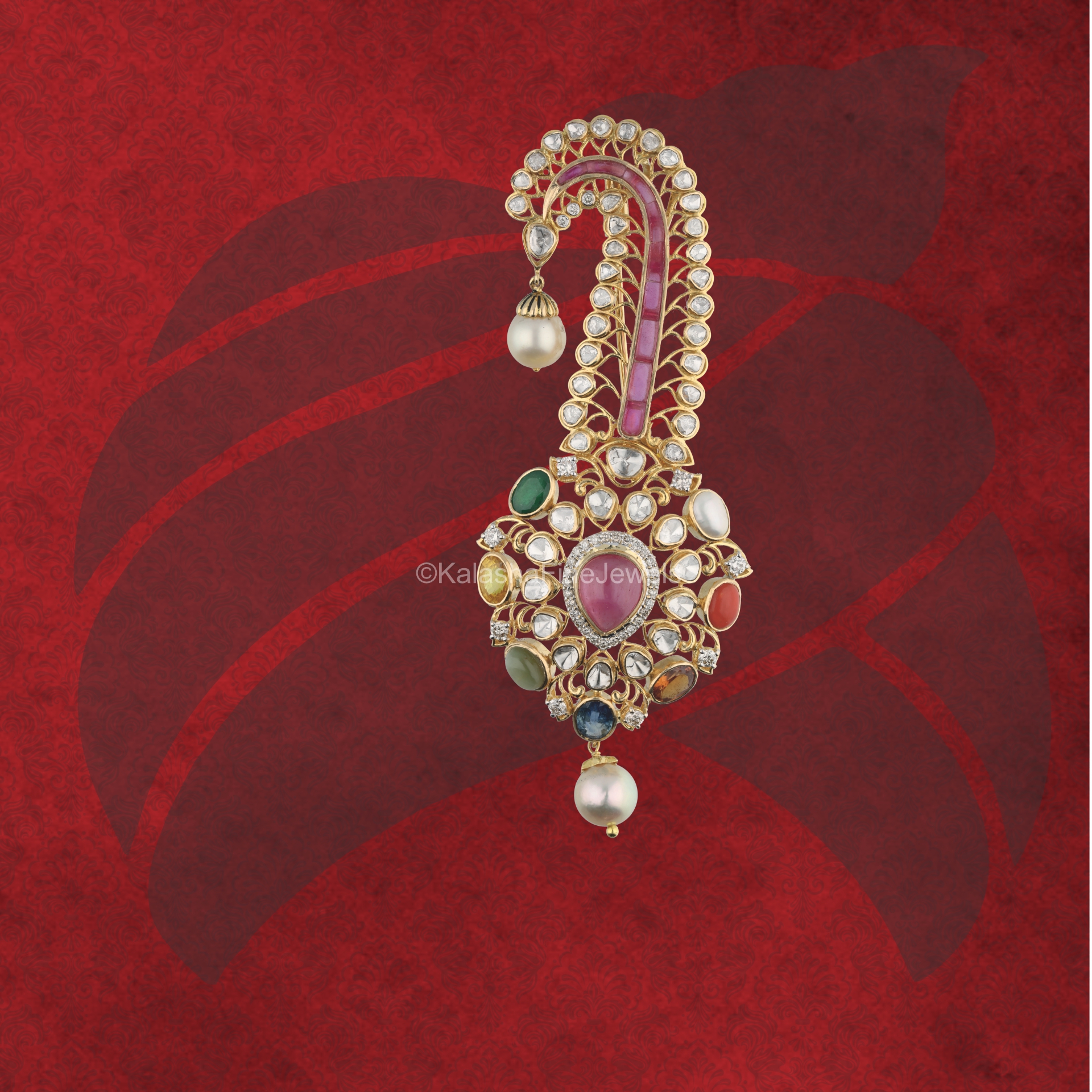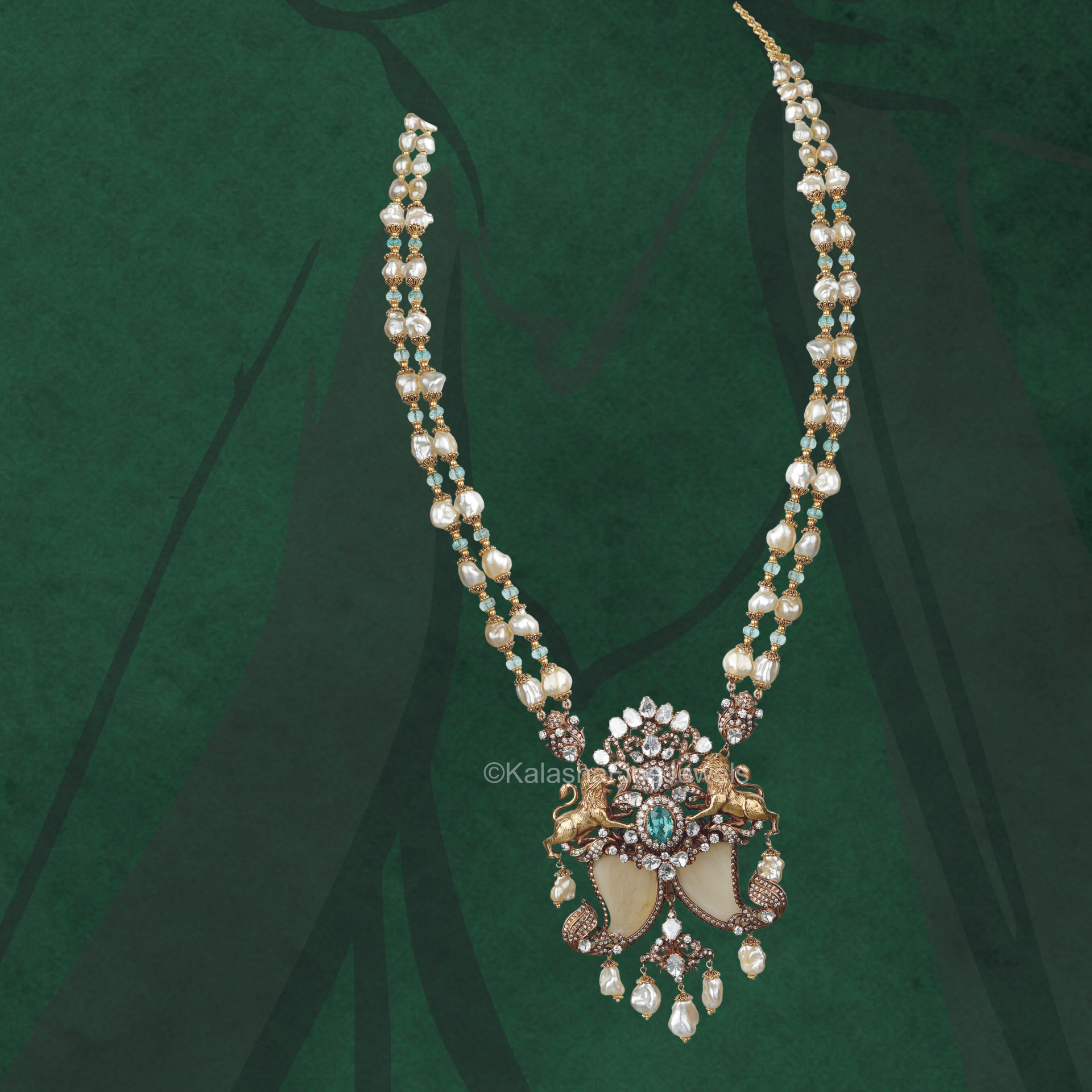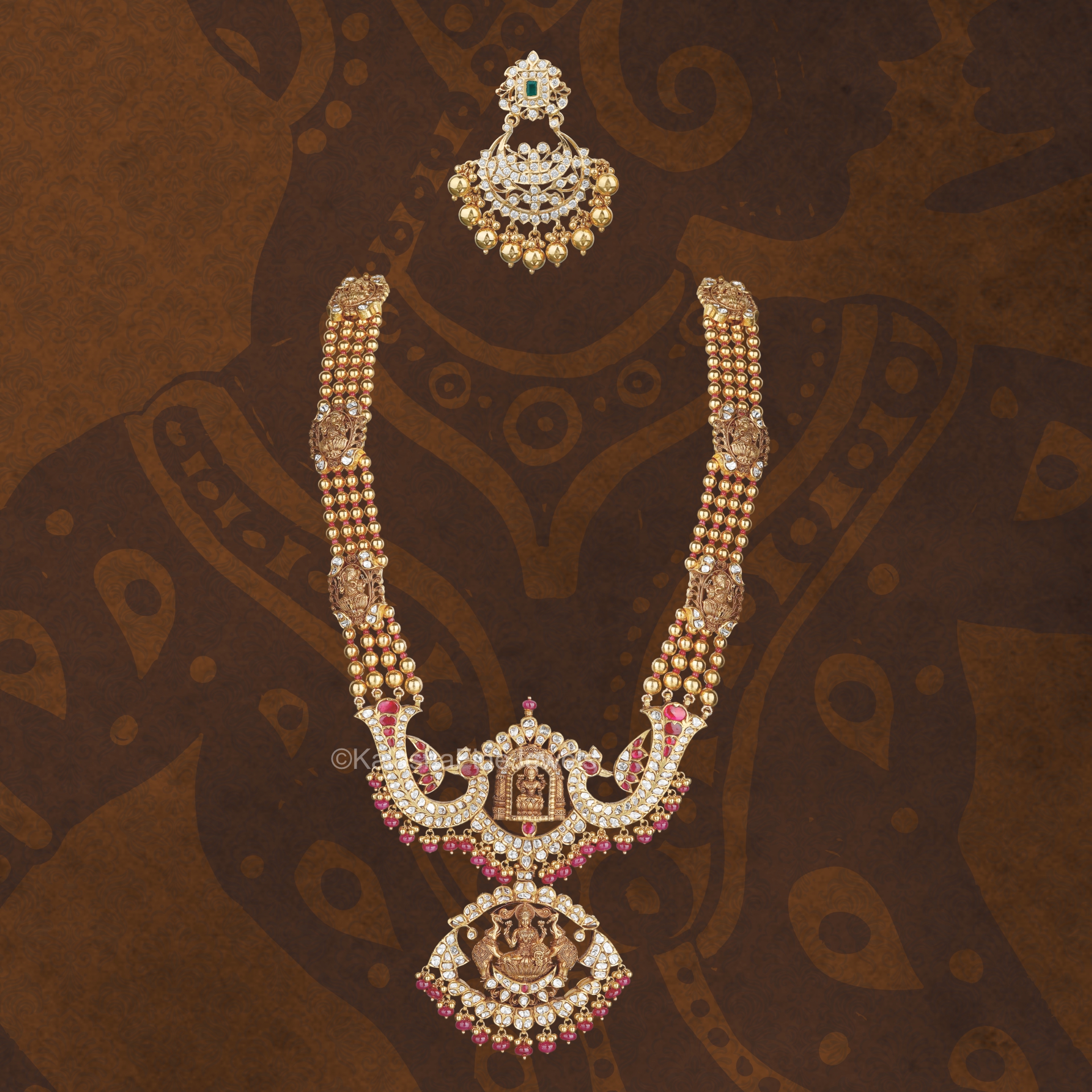
The Crown Jewel – Sarpech
Throughout Indian history, turban ornaments were worn by kings and gods as crowning symbols of temporal power. Turban jewels evolved from simple strands of pearls or bands of gems and the ubiquitous heron's feather to elaborate confections of gemstones. They were particularly popular during the Mughal period when they were emblems of imperial might and material wealth. The Sarpech ('sar'- head and 'pech'- screw) is specifically a turban ornament. It hails from Rajasthan and was adorned by various Hindu and Muslim royalty. The oldest piece dates back over 2000 years ago. The peacock feather on Krishna's head is also stated to be the oldest form of a Sarpech. Cave paintings have also depicted similar pieces of jewellery worn by both men and women. This ornament was attached to the turban and had design aesthetics to depict the status and prosperity of the royals.”.

THE MAGNIFICENCE OF ROYALTY – PULLI GORRU
The magnificence of Indian jewellery as such lies in its exceptional designs and the tireless efforts of skilled craftsmen who produce them. One such unique and creative design in Indian jewellery is the Puligoru pendant. Puligoru is an ancient Indian talisman made of tiger nails, worn by kings and rulers for protection and courage. It is believed that the nails of a tiger contained the essence of the animal’s strength. It’s a gem of the heart chakra, believed to awaken compassion and increase love in those who wear it. Puligoru necklace designs usually consist of lockets made of gold and these are encrusted with precious gemstones like rubies, emeralds, sapphires, diamonds, pearls, garnet, coral and many more.

The Embracement of Traditional Roots – Magri Pendant
The enchanting Magri pendant is gifted to us through the great Vijaynagar empire. Having prospered during the rule of Krishna Deva Raya of the Sangama Dynasty, it is noted to have been the epicentre of cultural treasures at the time. The jewellery saw growth and enjoyed a great deal of prominence. The Magri Mala was one such ornament seen adorned by Krishna Deva Raya, who gave it the prominence it still holds today. Originating from the great South Indian Dynasty the Magri pendant has gone through major cultural influences from all around India, especially in the Mughal dynasty. The Magri Mala is considered auspicious and traditional as it is imbibed with the rich cultural heritage and is a never-ending legacy which to date continues and will continue further.
